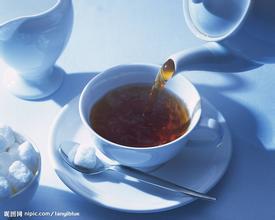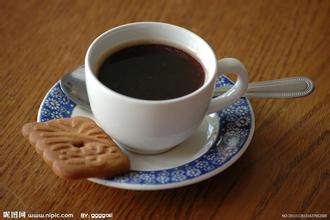What will Kenya and Manning taste like after matching according to a certain proportion?
The middle part is slightly sour, and the latter part is characterized by the flavor of nuts and chocolate. The blend is Brazil.

. I use the cooked bean matching method, which means that a single bean seed is baked first and then blended. During the baking process (the temperature displayed varies according to the design position of the baking furnace and probe) the temperature of the first explosion in Kenya is about 192 degrees Celsius, and the temperature of the second explosion is about 218 degrees Celsius. Mantenin's first explosion is about 196 degrees Celsius, and the second explosion is about 220 degrees Celsius, while the temperature at which Brazil enters the explosion will be the highest, with the first explosion reaching about 202 degrees Celsius and the second explosion around 228 degrees Celsius.
If the three beans are baked together, the definition of baking degree and taste will be quite vague, and there is no way to judge the overall flavor characteristics of beans and the instability of baking degree, resulting in unstable taste.
The second reason for the instability of customer beans is also caused by hard work-the change in the proportion of coffee beans after water loss. Different beans, after baking, because of different moisture content, the water loss rate will not be the same, after baking, the quality of beans will be different and expected. Most of the blended coffee is blended according to the percentage, so the quality of the beans after baking is about 20% less than that before roasting, because the water content is different, the water loss rate is also different at the same temperature, if you mix and bake, the imagined blending ratio will change with the change of water loss rate, so it is difficult to control the trend of taste.
Then again, is it possible to mix and bake beans well?
In fact, this possibility is still possible, but it takes a lot of effort to delve into techniques and baking theory.
First of all, find a suitable mix of beans, with a reasonable proportion, similar moisture content and close specific heat.
Secondly, the quality of each baked bean and its proportion in the overall blending should be calculated reasonably.
I think this is very difficult to do, feasibility, I think it is about 30%. So we have to ask, how to adjust the tactics? My suggestion is to appropriately prolong the time of dehydration, that is, to prolong the time from feeding to explosion, which is a process of full dehydration so that the moisture content of beans is approximately the same, which plays a vital role in achieving a uniform baking degree for beans with different moisture content, such as sundried beans. Having said that, this kind of baking kung fu still has a long way to go and cannot be practiced overnight.
Raw spelling can save a lot of time for bakers or bean suppliers, but do you want to think about the stability of beans and the taste trend of beans? I do not approve of baking after spelling, so I will assure my customers that I will never sell raw beans, absolutely take apart each bean for baking, and match it in a uniform proportion.
Important Notice :
前街咖啡 FrontStreet Coffee has moved to new addredd:
FrontStreet Coffee Address: 315,Donghua East Road,GuangZhou
Tel:020 38364473
- Prev

Popularization of knowledge about roasting and blending of coffee
The knowledge of roasting and blending of coffee is widespread, and people need to combine coffee from different places for several different purposes. The ideal goal, of course, is to piece together a coffee that tastes better than any of them. But generally speaking, Arabica coffee from a single origin is enough to make coffee that tastes good for export; it has a delicate flavor, a soft taste and a sweet aftertaste. So
- Next

How to balance the taste and reduce the cost of coffee by blending
Because one of the features of the Italian coffee machine is that it magnifies the most prominent flavor feature of coffee beans, we hardly use a single variety of coffee to make Espresso, otherwise if that coffee bean is bitter, the Espresso will be very bitter and sour. So we need to balance the flavors by matching them. A de facto reduction in cost
Related
- Does Rose Summer choose Blue, Green or Red? Detailed explanation of Rose Summer Coffee plots and Classification in Panamanian Jade Manor
- What is the difference between the origin, producing area, processing plant, cooperative and manor of coffee beans?
- How fine does the espresso powder fit? how to grind the espresso?
- Sca coffee roasting degree color card coffee roasting degree 8 roasting color values what do you mean?
- The practice of lattes: how to make lattes at home
- Introduction to Indonesian Fine Coffee beans-- Java Coffee producing area of Indonesian Arabica Coffee
- How much will the flavor of light and medium roasted rose summer be expressed? What baking level is rose summer suitable for?
- Introduction to the characteristics of washing, sun-drying or wet-planing coffee commonly used in Mantenin, Indonesia
- Price characteristics of Arabica Coffee Bean Starbucks introduction to Manning Coffee Bean Taste producing area Variety Manor
- What is the authentic Yega flavor? What are the flavor characteristics of the really excellent Yejasuffi coffee beans?

